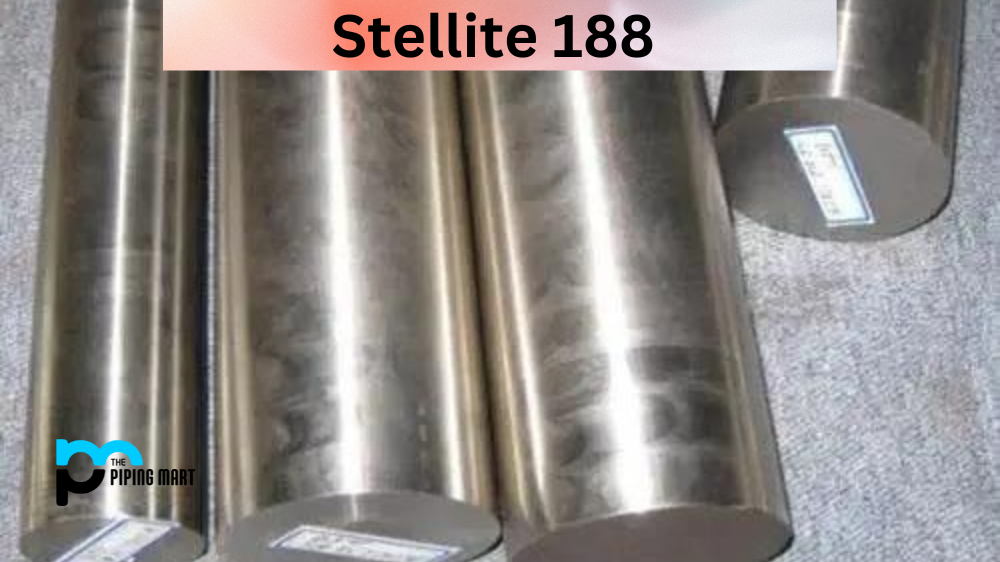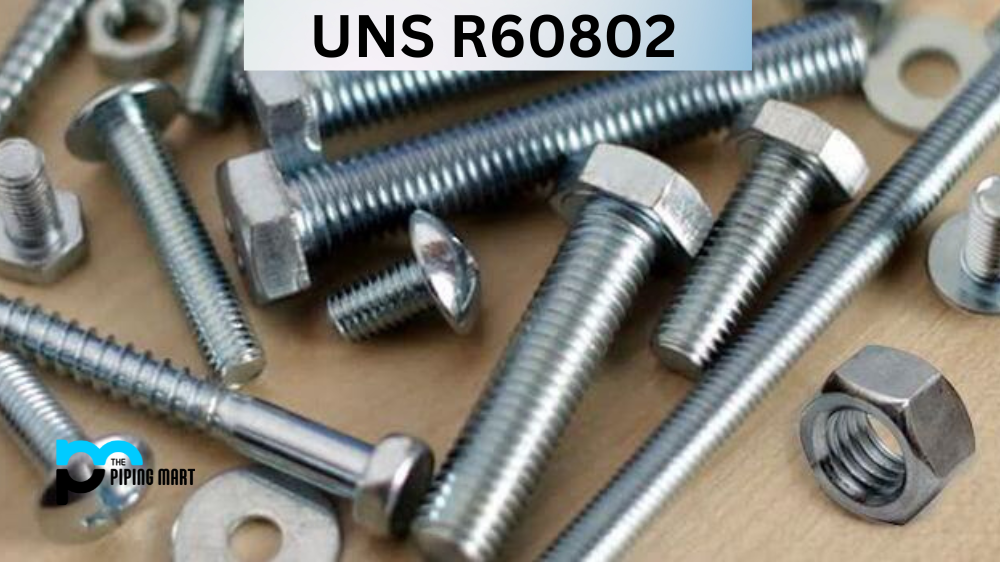AISI 1008 (UNS G10080) is a low-carbon alloy steel with various valuable properties. It is used in construction, automotive, aerospace, and other industries where strength and durability are essential. This blog post will discuss the different welding, chemical, mechanical, physical, corrosion resistance, heat resistance, heat treatment, and machining characteristics of the AISI 1008 standard.
What is SAE – AISI 1008?
SAE / AISI 1008 (UNS G10080) is a low-carbon steel type with enough manganese and phosphorus to be considered a low-alloy steel. It has excellent weldability with various commercial welding methods and is quickly soldering. This type of steel has higher strength than SAE/AISI 1005, providing good ductility in thicker gauges. Additionally, adding certain elements, such as aluminium, helps improve the hot-rolled finish during production. Overall, SAE/AISI 1008 offers ease of forming due to its excellent workability and is highly suitable for processes requiring moderate degrees of strength or cold bending operations.
What Forms is SAE – AISI 1008 Available at Piping Mart?
- SAE-AISI 1008 Channels
- SAE-AISI 1008 Bars
- SAE-AISI 1008 Pipes
- SAE-AISI 1008 Tubes
- SAE-AISI 1008 Bolts
SAE – AISI 1008 Chemical Composition
AISI 1008 is low-carbon steel and consists primarily of iron with a carbon content of 0.10% or less. It also contains minimal amounts of manganese, silicon, phosphorus and Sulphur, as well as trace amounts of other elements that might be present in the alloy. Due to its composition, SAE / AISI 1008 is highly ductile and can be used for various applications, including cold-headed fasteners, screws, nails and drilling components. The unique combination of elements makes it easy to work with at room temperature, making it suitable for large-scale production without risking material fatigue or cracking. It is ideal for established manufacturing where reliability and cost are critical outcomes.
| Element | Content (%) |
|---|---|
| Iron, Fe | 99.31-99.7 % |
| Manganese, Mn | 0.30-0.50 % |
| Carbon, C | 0.10 % |
| Sulfur, S | 0.050 % |
| Phosphorous, P | 0.040 % |
SAE – AISI 1008 Chemical Properties
AISI 1008 is composed primarily of carbon (0.08%), manganese (0.30-0.60%), phosphorus (0.04%) and Sulphur (0.05%). It also contains trace amounts of silicon (< 0.10%), iron (< 1%) and aluminium (< 0.005%). These elements contribute to its excellent strength and toughness compared to other steels in its class.
SAE 1008 Mechanical Properties
AISI 1008 has a tensile strength of 300 MPa (43 ksi) and a yield strength of 260 MPa (37 ksi). It also has excellent ductility at room temperature and high impact energy values at temperatures below zero degrees Celsius (-4°F). Additionally, it is highly resistant to corrosion due to its low sulphur and phosphorus content levels, which helps reduce oxidation rates when exposed to moisture or oxygen in the air.
| Properties | Metric | Imperial |
|---|---|---|
| Tensile strength | 340 MPa | 49300 psi |
| Yield strength (depending on temper) | 285 MPa | 41300 psi |
| Elastic modulus | 190-210 Gpa | 27557-30458 ksi |
| Bulk modulus (typical for steel) | 200 GPa | 29000 ksi |
| Shear modulus (typical for steel) | 80.0 GPa | 11600 ksi |
| Poisson’s ratio | 0.27-0.30 | 0.27-0.30 |
| Elongation at break (in 50 mm) | 20% | 20% |
| Reduction of area | 45% | 45% |
| Hardness, Brinell | 95 | 95 |
| Hardness, Knoop (converted from Brinell hardness) | 113 | 113 |
| Hardness, Rockwell B (converted from Brinell hardness) | 55 | 55 |
| Hardness, Vickers (converted from Brinell hardness) | 98 | 98 |
| Machinability (based on AISI 1212 steel as 100 machinabilities) The machinability of group I bar, rod, and wire products can be improved by cold drawing) | 55 | 55 |
SAE – AISI 1008 Physical Properties
AISI 1008 has a density of 786 kg/m3, which makes it lighter than most metals used in construction applications, such as aluminium or cast iron, but still heavier than plastics like polyethene or PVC tubing materials commonly found in plumbing systems. Additionally, SAE 1008 has an electrical resistivity value of around 60 microhm-cm, which means that it does not conduct electricity very well, making it suitable for use in applications where electrical insulation must be maintained, such as electrical wiring systems or power lines where safety is critical.
| Properties | Metric | Imperial |
|---|---|---|
| Density (composition 0.06% C, 0.38% Mn, 0.01% Si, annealed at 925°C) | 7.872 g/cm3 | 0.2844 lb/in³ |
SAE 1008 Thermal Properties
The thermal properties of AISI 1008 carbon steel are tabulated below.
| Properties | Metric | Imperial |
|---|---|---|
| Thermal expansion coefficient (@0.000-100°C/32-212°F) | 12.6 µm/m°C | 7 µin/in°F |
| Thermal conductivity (composition of 0.06% C, 0.4% Mn; 0°C ) | 65.2 W/mK | 452 BTU in/hr.ft².°F |
SAE – AISI 1008 Equivalent
| AMS 5040F | AMS 5042F | AMS 5044D | AMS 5047Ac | AMS 5050F |
| AMS 5053C | ASTM A108 | ASTM A29 | ASTM A510 | ASTM A519 |
| ASTM A545 | ASTM A549 | ASTM A575 | ASTM A576 | SAE J403 |
| FED QQ-S-698 (C1008) | MIL-S-11310 (CS1008) | FED QQ-S-637 (C1008) | UNI CB 10 FU | SAE J1397 |
| SAE J412 | SAE J414 | ASTM A512 | ASTM A513 | ASTM A575 |
| ASTM A576 | ASTM A635 | ASTM A830 | DIN 1.0204 | |
AISI 1008 Applications
AISI 1008 has become a staple ingredient in many applications and industries due to its unique combination of strength, durability, flexibility and affordability. Primarily used in the automotive industry, it can be found in components like mounting plates and panel supports; however, its uses go far beyond the car industry. Due to its superior load-bearing capabilities, it is also used in aeroplanes, architectural panels, construction equipment parts, agricultural implements and industrial casting components. In addition to these structural uses, SAE / AISI 1008 has provided excellent results as an electrical conductor or a magnetic core material. Its natural properties make it an ideal candidate for general-purpose welding and cold roll-forming operations. Thanks to its impressive array of uses and affordable cost per unit, UNS G10080 will undoubtedly remain essential in many industries.
- SAE 1008 is used in a variety of applications, including:
- Automotive body panels
- Electrical appliances
- Hoses and tubing
- Plumbing fixtures
- Roofing
- Structural applications
- Wiring
- Welding electrodes
- Abrasive products
SAE – AISI 1008 Specifications
AMS 5044D
ASTM A108
ASTM A545
SAE J403
UNI CB 10 FU
ASTM A512
ASTM A635
AMS 5047Ac
SAE J1397
SAE – AISI 1008 Corrosion Resistance
1008 steel has high corrosion resistance and can easily withstand external and internal environments. This is because steel has a low carbon content, low amounts of alloying elements such as silicon and manganese, and high doses of phosphorous and Sulphur in tiny amounts. It also possesses a high strength-to-weight ratio, making welding and press forming effortless. All these characteristics have enabled AISI / SAE 1008 steel to be widely used for making parts for aerospace, medical instrumentation, appliances, chemicals processing, farming equipment, automotive components and construction materials. Its versatility makes it one of the most sought-after general-purpose steels by engineers from various industries.
SAE – AISI 1008 Heat Resistance
AISI UNS G10080 is renowned for its heat resistance. It is an alloy with a relatively low carbon content, allowing it to be welded readily without preheating or post-welding treatments. Its properties remain unchanged even at temperatures of up to 930°F, making it highly reliable for various automotive and heavy machinery applications. Its versatility and ease of processing make SAE/AISI 1008 stand out, making it the ideal choice for businesses looking for heat-resistant materials.
SAE – AISI 1008 Welding
The weldability of SAE 1008 Material can be good when the correct welding techniques are employed. The material can be welded using manual arc welding (MAW) or gas metal arc welding (GMAW). When welding with MAW, it is essential to ensure that the electrode has a low hydrogen content. This will help minimize cold cracking or other problems during or after welding. When using GMAW, it is essential to use a shielding gas with an appropriate flow rate to avoid oxidation or other issues.
SAE – AISI 1008 Heat Treatment
Heat-treating AISI 1008 steel can be complex since such a wide range of mechanical and physical properties are possible. Electrical or gas furnaces designed for heat treatment must reach precise temperature levels in the specified period to achieve the desired outcome. The following conditions can be fulfilled when properly heat-treated: improved machinability, softening, plasticity, and elastic flexibility. Heat treatment should be tailored around the specific task to maximize the potential of SAE 1008 steel, as this carbon steel grade is ideal for applications requiring low cost and strength without sacrificing toughness and formability.
AISI 1008 Machining
Machining 1008 Standard is unique because its properties allow for the smoothest, most precise cuts. It is a low-carbon steel composed of up to 0.08% carbon, making it quite malleable and thus easier to work with than other types of steel. When machining this type of steel, tools with high speeds and light feeds should be used, as well as those with coated surfaces and fine teeth; this helps reduce the conversion of friction into heat and reduces the possibility of surface wear and tear. Machinists can also take advantage of AISI 1008’s hardness by using techniques such as cutting or grinding on parts that need deeper settings or more intense operations without damaging intricate components or surfaces. Safety procedures should also be taken when machining SAE/AISI 1008 since some applications expose workers to sparks, heat build-up, toxic fumes, noise from power tools, flying particles, etc. With the proper methods appropriately used, machining this specific type of metal can be done safely and efficiently for all industrial needs.
Conclusion
All-in-all, SAE 1008 offers excellent versatility thanks to its wide range of properties, including chemical composition, mechanical characteristics, physical properties, corrosion resistance & heat resistance, and suitable machinability characteristics for various purposes. It’s, therefore, no wonder why this particular grade of steel is so popularly used across multiple industries today! Whether you’re looking for a solid structural component for your construction project, require parts that offer superior heat resistance & corrosion protection within an automotive engine component design, or need something lightweight yet durable enough to withstand extreme conditions – SAE / AISI 1008 should fit the bill!

Pipingmart is B2B portal specializes in industrial, metal and piping products. Also, share latest information and news related to products, materials and different types grades to help business dealing in this industry.




